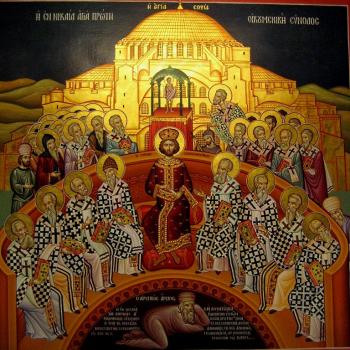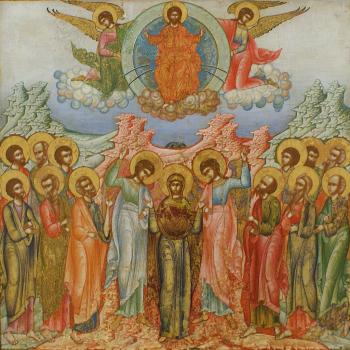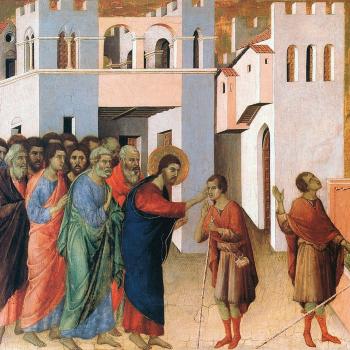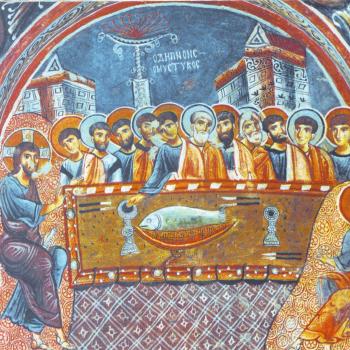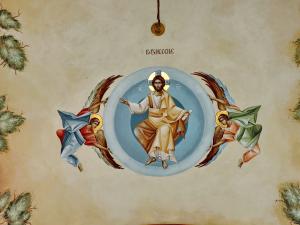
Things are not always as they seem. Jesus, to so many, seemed one to be merely a man; while he might have been one who did and said surprising things, in the end, all the thought of him was that he was just a man. This is how many see him today. They might consider him to be an odd man, one who might have said and did many extraordinary things, especially for the time and place from which he came, but still just a man. They say he might have been a good man, but he was still just a man. Of course, initially his followers only understood him as being a man as well; but they saw him as being an extraordinary man, for they believed he was not just a man, not just a prophet, but the messiah. They were fascinated by him. They wanted to be with him, as the thought, as he was the messiah, he was bound to do great things, and those who were associated with him would share in his greatness. They didn’t know what he exactly he would do as the messiah, but they knew he was special and that God was at work in and through him. They could see the connection between Jesus and God, but they could not really see all that Jesus was. Even when he told them that when they saw him, they saw the Father, they did not realize what exactly he meant; did they not see him? Where, then, was the Father? How exactly did they see the Father in him? Did he mean some sort of analogy by that statement? The reality, they would find, was something far different; what they saw of Jesus was not all that they could and would see of him; they saw him as a man, but there was more, much more to him than that – and it was in that much more, when they could and would see it, they would also see the Father. For when they could see Jesus, not just as a man, but as the incarnate Logos, they would see the glory of God, the glory of the Father, which was one with the glory of the Son.
However hidden it was, thanks to the incarnation and the assumption of human nature, Jesus always had the glory of God with him; it was this glory which was revealed in the light of the resurrection, enabling the faithful to see Jesus for who he is. Nonetheless, before the resurrection, others got a glimpse of it, such as at the transfiguration when Peter, James, and John were taken up Mount Tabor. It is this glory which literally energized the church and the faithful, for when they had seen it for themselves, they were able to engage it, embrace it, and find themselves united with it, making the faith not just a thing of mere belief or speculation, but a reality which could be experienced for themselves. Now, because not everyone has had their eyes open to see the glory of God in this way (though to be sure, all can and will be able to do so), those who have seen and experienced it can and should share their experiences with others, helping others to open themselves up to it and receive it unto themselves. It is, in this fashion, the proper source and foundation of Christian mission, for it demonstrates the paradoxical truth of the Christian faith, the truth that the transcendent glory of God can and will find itself immanent within creation itself, transforming the world from within. This is why what happened to Peter, James and John on Mount Tabor was a significant point in Christian history, for they were given a vision, an experience, of the transcendent glory which was in Jesus, allowing them to know Jesus, not just through his humanity, but through his divinity, and so to find themselves changed from that experience, being made ready for the trials and tribulations which they would soon face:
And after six days Jesus took with him Peter and James and John his brother, and led them up a high mountain apart. And he was transfigured before them, and his face shone like the sun, and his garments became white as light (Matt. 17:1-2 RSV).
This experience was special for them, for they truly got to see Jesus literally in a new light, but it was a light which needed to be hid until the resurrection. This is because Jesus was still undergoing his kenosis; he still had his mission in the world, the one which would take him unto death and to the edge of being itself. Thus, Jesus told Peter, James, and John to be silent until after his resurrection from the dead (cf. Matt. 17:9); but once he rose from the dead, they were able to speak of it, to present to the faithful their vision, so as to help direct others to see Jesus, not just as a special man, but as the God-man, pointing out that they were not just making things up, but revealing what it is they had themselves experienced:
For we did not follow cleverly devised myths when we made known to you the power and coming of our Lord Jesus Christ, but we were eyewitnesses of his majesty. For when he received honor and glory from God the Father and the voice was borne to him by the Majestic Glory, “This is my beloved Son, with whom I am well pleased,” we heard this voice borne from heaven, for we were with him on the holy mountain. And we have the prophetic word made more sure. You will do well to pay attention to this as to a lamp shining in a dark place, until the day dawns and the morning star rises in your hearts (2 Ptr. 2:16-19 RSV).
And so, it is this message which we hear after the resurrection. We are told of the way many saw and experienced Jesus, an experience what revealed to them that he was more than just a man. We are told that the glory which is had in him is meant to be seen and experienced by all, and in that experience, we should find ourselves being energized by him, participating in that glory for ourselves, and so become deified by it. But it is also important to note that this glory is not meant for us alone; it is meant for all. The world and all that is within is was made to partake of the divine glory, to be transfigured by it. And so, if our eyes are properly open, we not only will be able to see the glory shining in Jesus, we will be able to see the glory shining in and through the whole of creation, as Jesus shares it with all. All things can and should participate in the divine life, each, of course, in their own way. This is the kind of vision which all shall be able to have in eternity, but it is also a vision which we can experience, at least in part, now:
Eternal life, the grace-bestowing vision of the kingdom of God, is available in this world, according to the meaning of this dogma; it is as if a new ascent to Mount Tabor and contemplation of the Lord’s glory takes place. The power of the transfiguration is the kingdom of God, and the “some” who did not taste death before they saw the kingdom of God are not only the disciples but all who commune in eternal life and who are expressly honored with the vision of God’s glory.[1]
The glory found in the world reflects and shares the glory found in Jesus. The source and foundation of it all is in Jesus. This, of course, shows us how the glory, as it is found in creation, differs from the way it is found in Jesus, for the glory which is found in creation is derivative in nature while the glory as it is found in Jesus is not. This is why, when we see and experience that glory in creation, that glory does not rest upon itself but points to its source, Jesus, and in Jesus, when we see the glory, it is far greater than where we see it anywhere else, for it is truly his own glory, the glory of God. And in this way, when we see it in Jesus, we can be said to see the Father, for that glory is one, even as the Father and Son are one.
[1] Sergius Bulgakov, “On the Kingdom of God” in The Sophiology of Death. Essays on Eschatology: Personal, Political, Universal. Trans. Roberto J. De La Noval (Eugene, OR: Cascade Books, 2021), 13.
Stay in touch! Like A Little Bit of Nothing on Facebook.
If you liked what you read, please consider sharing it with your friends and family!




